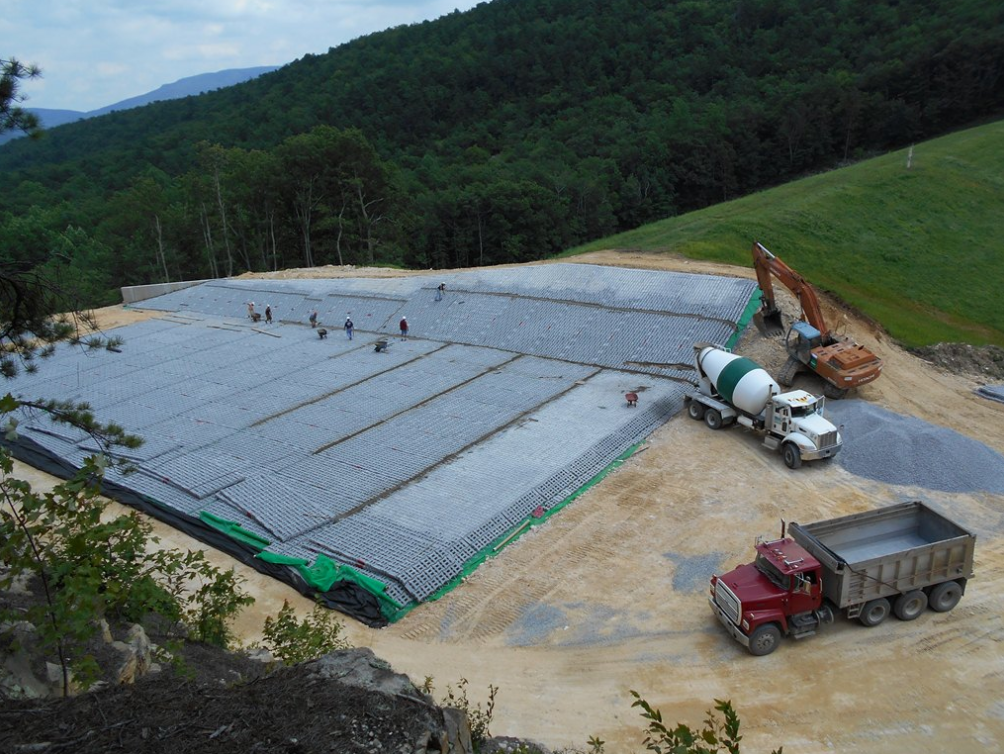New Guidance for Articulated Concrete Blocks for Spillway Armoring
In the fight against erosion, articulated concrete blocks serve as an option to armor auxiliary spillways.
A new chapter in the National Engineering Handbook – reviewed by Freese and Nichols’ Grady Hillhouse, PE, and Colin Young, PE – covers articulated concrete blocks (ACBs), its usages, new design methodologies, design considerations, maintenance and installation guidance.
Grady and Colin worked in collaboration with the Natural Resources Conservation Service’s National Design, Construction and Soil Mechanics Center in Fort Worth, Texas.
The guidelines for ACBs were published in March. Read the full chapter here.
What are ACBs?
The articulated concrete blocks serve as a system of mats of precast concrete blocks to resist erosion and replace other hard armoring methods like roller compacted concrete (RCC), poured concrete riprap, or stone riprap. The blocks range in thickness from four to nine inches, can interlock, be tapered and be open- or closed-cell.
The new design methodology requires individual blocks to be stable based on their own without cabling. Cables are only used to facilitate deployment in mat form. The ACB system includes a filter and separation system below the blocks consisting of geogrids, coarse aggregate, geotextile and sand.
ACBs can provide channel protection, scour protection around bridge piers, grade stabilization and spillway protection, but this new guidance document is focused specifically on use in spillway armoring under high velocity conditions.
Case Study: Upper Elk Creek Site 23D
Freese and Nichols recently completed work for NRCS on the Upper Elk Creek Site 23D project, also making history in Oklahoma as NRCS’ first use of ACBs in a spillway in the state.
Located in Beckham County, Oklahoma, and constructed in in 1976, the existing dam surpassed its 50-year design life. Freese and Nichols design for rehabilitation used ACB to extend the service life to 100 years while providing required flood protection.
Colin served as project manager, and Grady was the lead H&H engineer.



